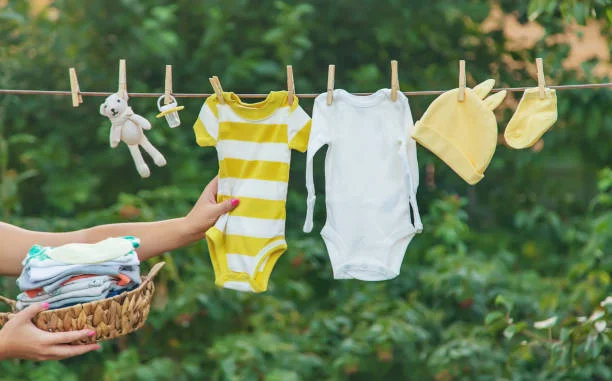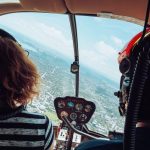Introduction: Why a Baby Clothes Checklist Matters
Welcoming a newborn is one of life’s most joyous, and overwhelming, milestones. Amid diapers, feeding schedules, and endless advice, clothing your baby or Baby Clothes can feel deceptively simple, yet parents often find themselves unsure: How many onesies do I need? What about sleepwear? Should I splurge on adorable outfits that my baby will outgrow in weeks?
That’s where a well-crafted baby clothes checklist comes to the rescue. A checklist helps you buy smart, plan ahead for growth spurts and seasons, and avoid both overbuying and last-minute panic runs to the store. It’s not just about what’s cute, it’s about what’s practical, comfortable, and safe. Plus, having a few essentials on hand ensures you’re prepared whether it’s a cozy day at home or a surprise outing.
Why Every New Parent Needs a Baby Clothes Checklist
- Saves Time, Money, and Stress
A checklist helps you focus on essentials rather than adorable but impractical one-offs. It reduces unnecessary expenditure and ensures you have what you need when you need it. - Accounts for Growth Spurts
Babies grow fast, sometimes overnight. A checklist allows parents to stock a balanced range of sizes (from newborn up to 3 or 6 months) to keep pace without waste. - Prevents Dressing Disasters
Ever started an outfit change only to realize you’re missing a matching sock or a coordinating cap? A checklist keeps things organized – no frantic rummaging through drawers. - Mindful Shopping
A well-designed list incorporates essential garments by season and activity—sleep, play, outings—so you shop with purpose. For instance, if you’re browsing sites like BabyCenter or What to Expect, you’ll often find recommended totals (e.g. 6–8 bodysuits, 4–6 sleepers). Having your checklist aligned with reputable parenting guidance brings peace of mind. - Tailored to Your Climate & Lifestyle
Each family is different. Some spend a lot of time outdoors and need layering for outdoor strolls; others mostly stay indoors and should focus on breathable, comfortable clothing. A checklist lets you customize for local weather and your daily routine.
Must-Have Baby Clothes for Newborns
Here’s a foundational starting point. Quantities can be adjusted based on laundry frequency, climate, and personal preference—but this gives a solid baseline:
- 6–8 bodysuits (onesies) – for layering or worn solo; opt for snap closures for easy diaper changes.
- 4–6 sleepers or zippered gowns – cozy and convenient, especially if you prefer zippers for quicker changes.
- 3–4 swaddle blankets or sleep sacks – helps with safe swaddling or regulating temperature; a wearable blanket is a safe alternative to loose blankets in the crib.
- 2–3 pairs of mittens and booties – newborns can’t regulate temperature well and mittens prevent scratching.
- 1–2 hats or caps – essential for temperature regulation, especially in cooler climates.
- 2–3 receiving blankets – multifunctional – great for burping, swaddling, or as a clean surface when you’re out.
- 1–2 car seat covers / stroller covers – cute but also practical for protecting against weather and germs.
These items address immediate needs while minimizing clutter. Once you’re in a rhythm with laundry, feel free to dial quantities up or down.
Everyday Wear for Comfort and Play
Once your baby rolls into the 1–3 month zone and starts becoming more alert and active, you’ll want clothes that support everyday life:
- 4–6 soft tee shirts or bodysuits – short- or long-sleeve depending on season.
- 3–4 pants or leggings – stretchy waistbands are your friend for quick changes.
- 2–3 rompers or playsuits – easy all-in-one options—ideal for when your baby learns to grasp or kick.
- 2–3 lightweight cardigan sweaters or zip-ups – great for layering when indoors or during quick errands.
- 2 bibs (plus extras for spit) – saves outfits from drool or spit-ups without a full change.
- 1 set of sleepwear (if separate from bodysuits) – soft pajamas or a sleep sack for safe nightwear.
Prioritize soft, breathable fabrics like cotton or cotton blends – ideal for playtime, tummy time, and endless snuggles.
Special Occasion Outfits
You don’t need whole wardrobes of fancy clothes, but a couple of outfits for photos, gatherings, or religious ceremonies can add joyful moments to the memory box:
- One “nice” outfit – think an adorable onesie with a little skirt, dungarees, or soft trousers plus a coordinating top.
- One photo-ready ensemble – maybe a pretty knit set, a rompersuit with soft embroidery, or a themed outfit for your first photo shoot.
- Accessories (optional) – tiny bow headbands, a special hat, or a blanket that matches the outfit; small details go a long way in photos.
These are optional but meaningful items you can mix into your checklist. If you browse maternity or baby fashion sites, like for instance checking accurate style advice or evaluation practices, you’ll appreciate fashion-curating tools like the “rub rankings” mentioned in this helpful fashion-evaluation piece. (See link included later.)
Seasonal Baby Clothes Essentials
New Zealand’s beautiful but varied climate, sunny summers, crisp autumns, cool winters, means adjusting your baby’s wardrobe thoughtfully:
Warm Months (Spring/Summer)
- 6–8 lightweight cotton bodysuits or singlets
- 3–4 shorts or skirts
- 2 sun-hats with UPF protection
- 1 sun-protective swimwear or legionnaire hat if outdoors frequently
- Muslin swaddle blankets for shade and temperature control
Cool Months (Autumn/Winter)
- 4–6 long-sleeve bodysuits
- 3–4 fleecy or thermal pants
- 2–3 warm sleepsuits or zip-up footed pajamas
- 2 knit cardigans or baby jackets
- 2 cozy hats and 2–3 pairs of booties or socks
- 1–2 sleep sacks or swaddles rated for lower temps
Transition Seasons (Spring/Autumn)
Layering is your best friend. Combine a bodysuit with leggings, a light sweater, and a breathable blanket. That way you can peel back or pile on as the temperature shifts throughout the day.
You can even lean on seasonal-style inspiration posts, for instance, this guide on “how to find your style this summer” helps anyone pick versatile wardrobe pieces that stay relevant across changing weather and activities.
Conclusion
Putting together the perfect baby wardrobe doesn’t require buying every cute outfit in sight. A thoughtfully tailored baby clothes checklist lets you balance functional needs, seasonal context, and personal style in a single easy-to-manage framework.
- Start with the must-have basics: bodysuits, sleepers, soft blankets, mittens, and hats.
- Build everyday everyday comfort pieces: rompers, pants, zip-ups, and bibs.
- Add in just one or two special occasion looks for memories.
- Tune the checklist for your climate and laundry habits – layering makes a big difference.
Once you’ve landed on your ideal checklist, you’ll find dressing your baby becomes one less worry and one more moment for joyful bonding.
Frequently Asked Questions
1. How many sets of baby clothes do I really need?
It depends on how often you do laundry and local climate. A great baseline is:
- 6–8 bodysuits
- 4–6 sleepers
- A handful of pants/rompers/cardigans for variety
If you’re washing items every other day, this usually keeps you covered, even with messy spit-ups or diaper blowouts.
2. What fabrics are best for baby clothes?
Soft, breathable fabrics such as 100% cotton, cotton-modal blends, and bamboo blends are ideal for babies; they’re gentle on sensitive skin and easy to care for. Look for Oeko-Tex or similar certifications for chemical-free fabrics. Muslin is great for blankets and swaddles – lightweight, breathable, and naturally cooling.
3. Are special occasion outfits necessary for newborns?
Not strictly, but they can be sweet for keepsake photos, milestone celebrations, or family gatherings. Choose one or two that look great in pictures and pair well with simple basics you’re already using. It’s a way to celebrate your baby without overbuying.
Additional Helpful Reading
- A clothing-selection fashion tool you might find interesting is this deep dive into “rub rankings” – a technique for optimizing fashion evaluation that can help when shopping for baby clothes to balance style, wearability, and longevity.
- BabyCenter: Baby clothes buying guide – BabyCenter is a trusted global parenting resource. Their baby clothes guide covers essentials, sizing, and tips for new parents, which aligns perfectly with your “Must-Have Baby Clothes” and “Why Every New Parent Needs a Checklist” sections.
- What to Expect: Baby clothing essentials – What to Expect is another authoritative parenting platform. Their essentials list backs up your recommendations for bodysuits, sleepers, and seasonal layering, which you can reference in the Seasonal Baby Clothes Essentials or FAQ sections.
Ready to grow? Explore More insights at 2A Magazine that can guide your next big move.







